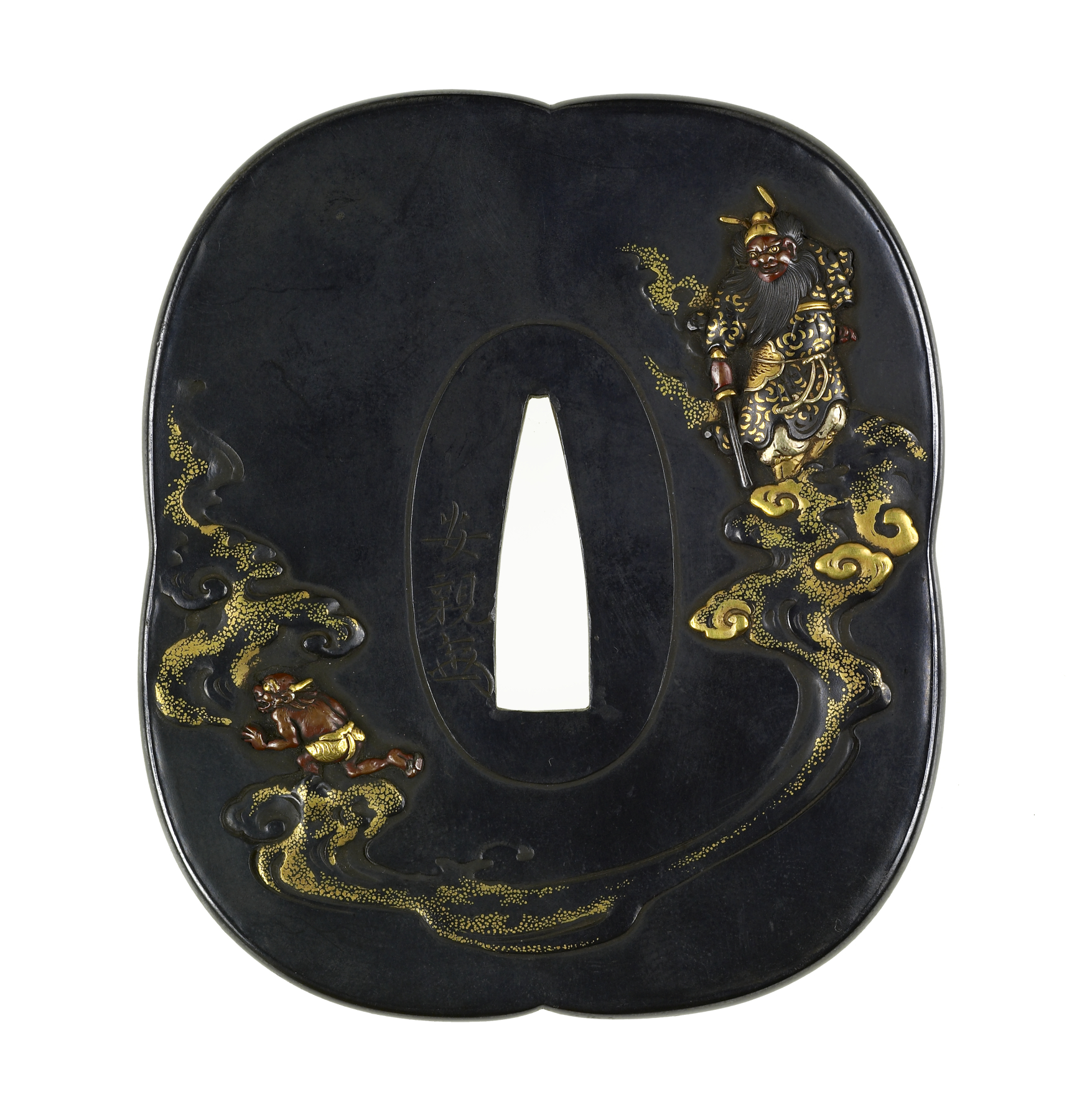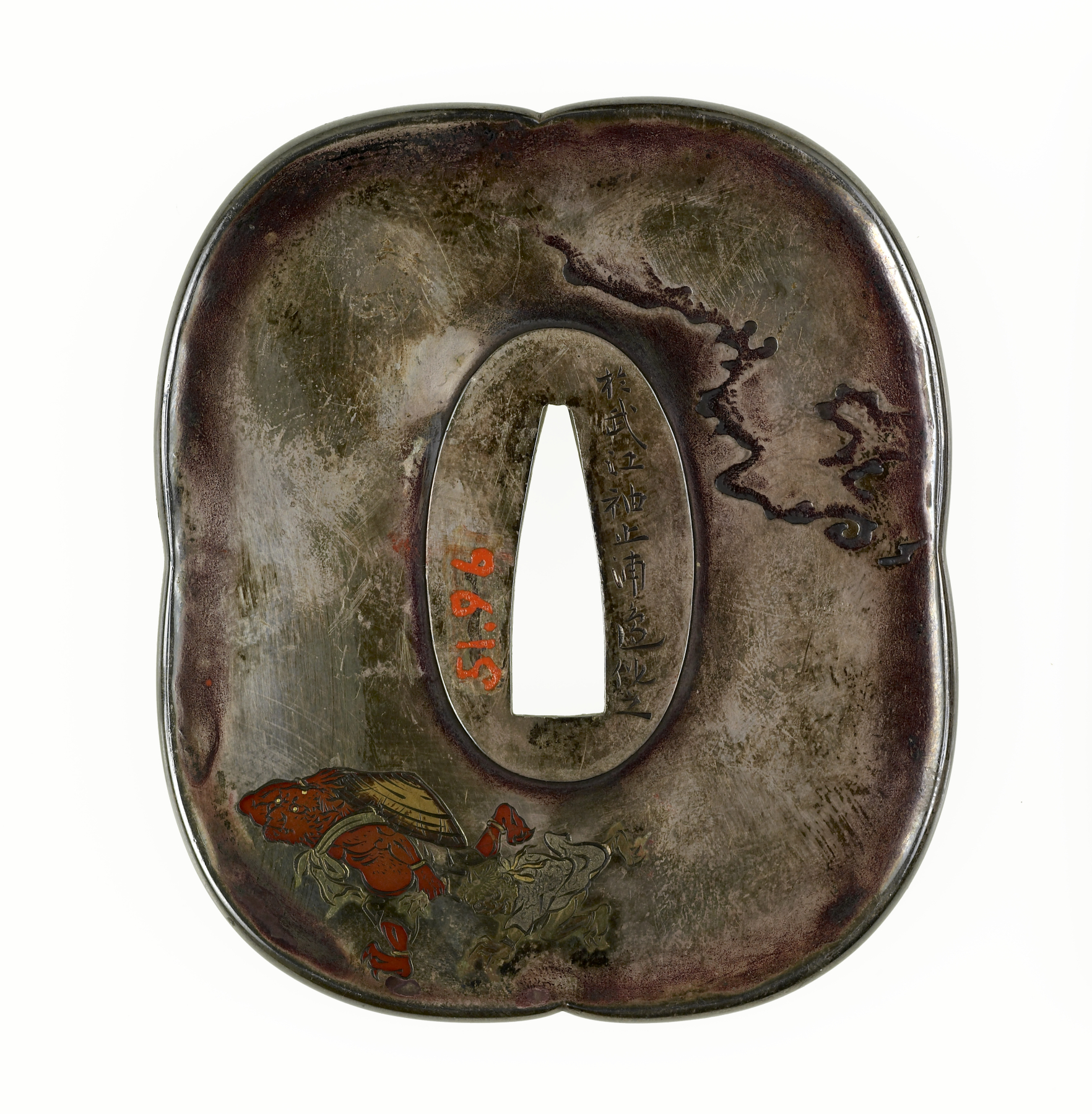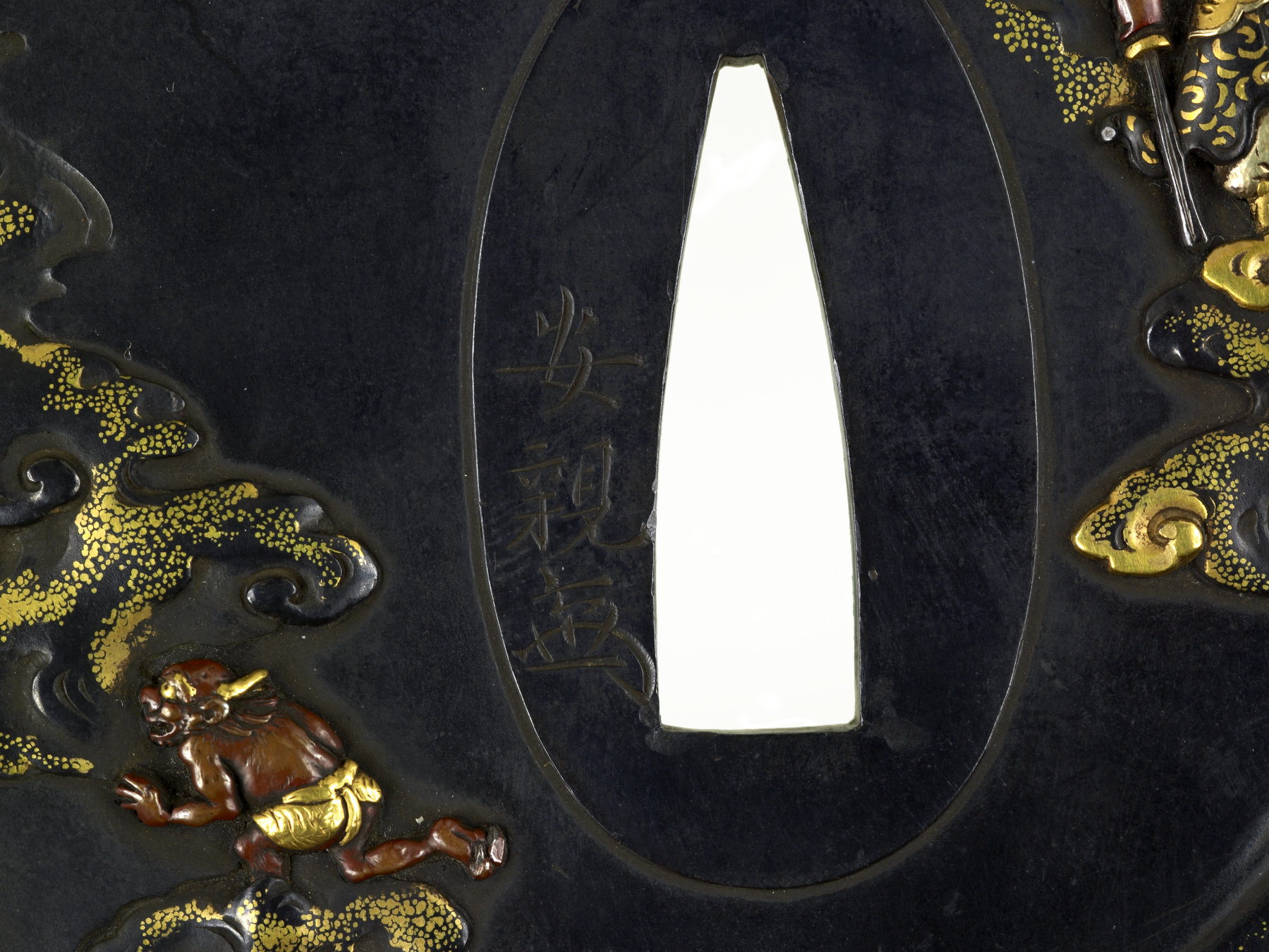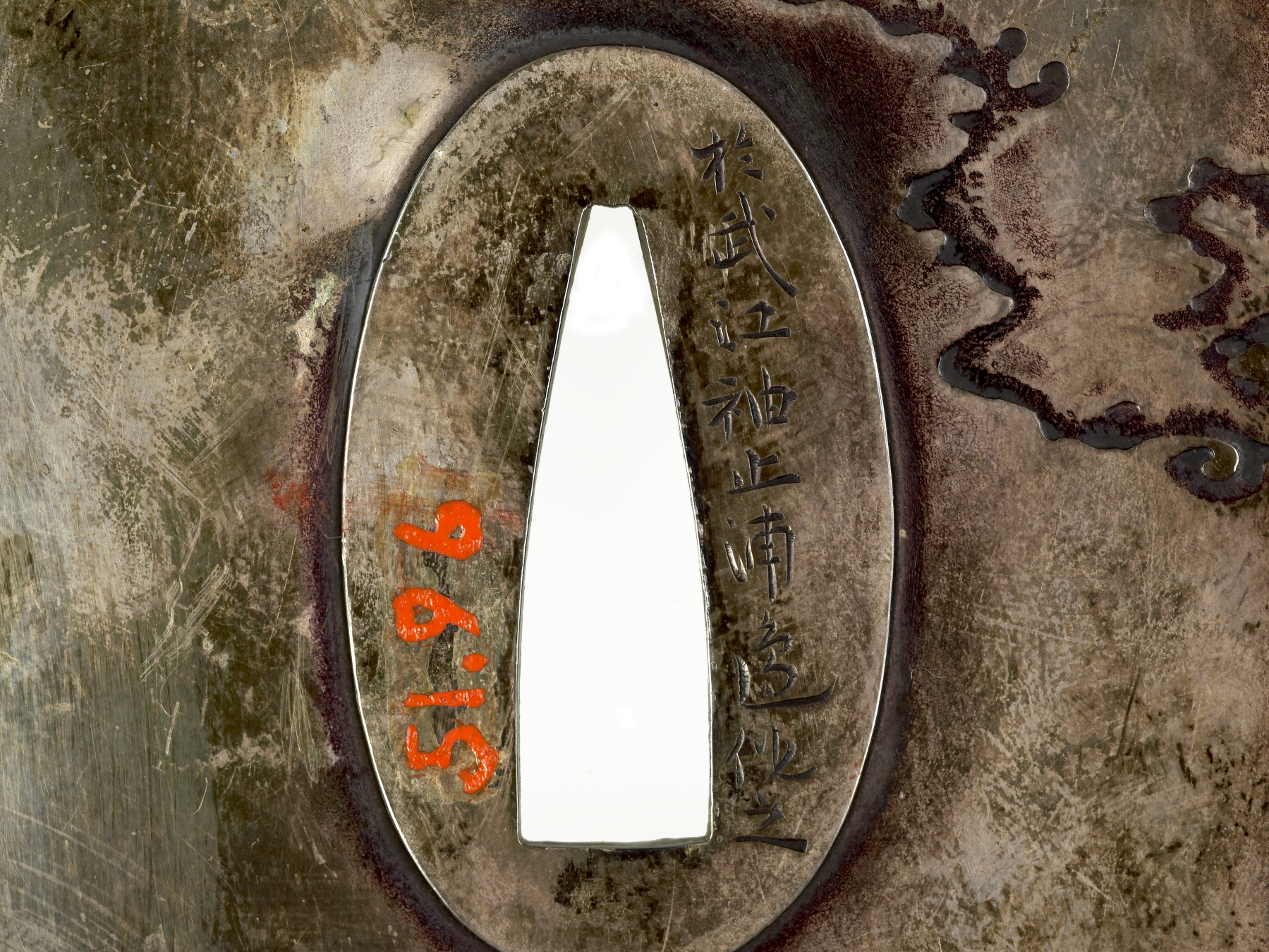Tsuba with Shôki the Demon Queller Chasing Demons
(Japanese Military Armor)
On a cloud at the upper right stands the demon queller Shôki. He is dressed in Chinese-style armor. The cloud continues below the central opening of the tsuba to where a demon runs away from Shôki. This motif continues on the reverse of the tsuba where two more demons are shown fleeing. The reverse was over cleaned at some point in the tsuba's history resulting in a loss in detail. The legend of Shôki originated in China. Shôki was an aspiring scholar in China who committed suicide when he failed the examinations to become a government official. The emperor, when he realized the degree of Shôki's commitment to service, awarded him the title of doctor. Shôki then appeared to the emperor in a dream where he vowed to protect the empire from demons to show his gratitude. As one might expect on a sword fitting, Shôki is depicted as a fierce and devoted warrior quelling three demons.
Inscription
Provenance
Provenance (from the French provenir, 'to come from/forth') is the chronology of the ownership, custody, or location of a historical object. Learn more about provenance at the Walters.
Henry Walters, Baltimore [date and mode of acquisition unknown]; Walters Art Museum, 1931, by bequest.
Geographies
Japan, Tokyo
(Place of Origin)
Japan, Tokyo (Edo) (Place of Origin)
Measurements
at indent: 3 1/8 x 2 11/16 x 3/16 in. (7.9 x 6.75 x 0.45 cm)
Credit Line
Acquired by Henry Walters
Location in Museum
Not on view
Accession Number
In libraries, galleries, museums, and archives, an accession number is a unique identifier assigned to each object in the collection.
In libraries, galleries, museums, and archives, an accession number is a unique identifier assigned to each object in the collection.
51.96








